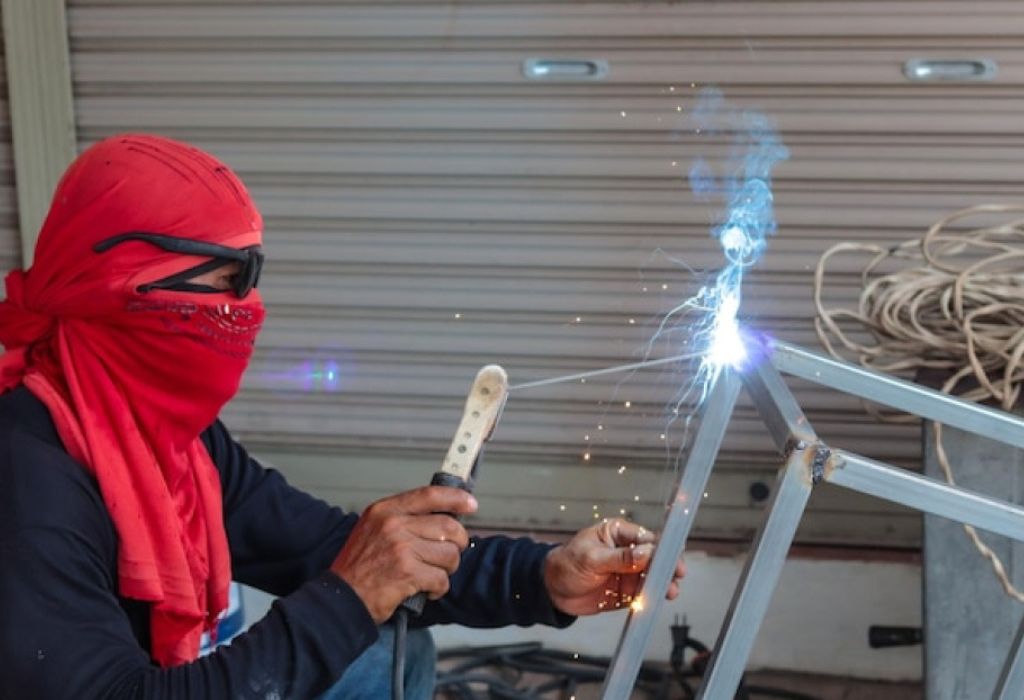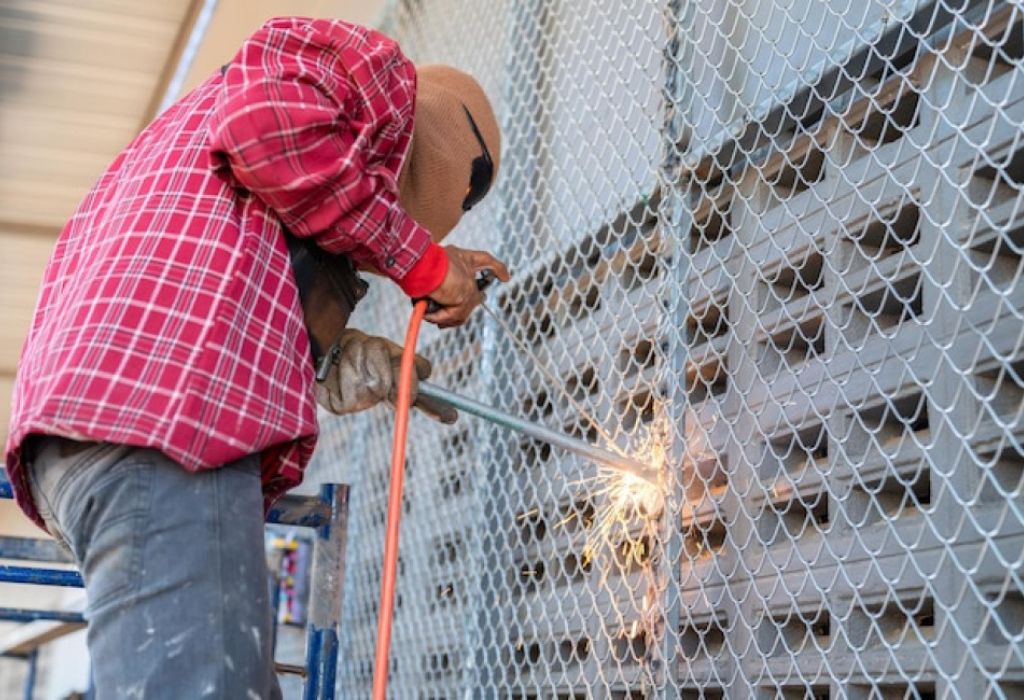Welding is an essential skill in construction, manufacturing, and metalwork, but it comes with serious risks.
Among these, electric shock is one of the most dangerous hazards that welders face daily. What may start as a small jolt can quickly turn into a life-threatening situation.
Every year, welders sustain injuries due to electric shocks, and in severe cases, these shocks can be fatal.
According to the National Institute for Occupational Safety and Health (NIOSH), as little as 100 milliamps of electrical current passing through the body can cause death (americantorchtip.com).
This makes understanding and preventing electrical hazards a top priority for every welder.
Electric shocks in welding occur when the human body becomes part of an electrical circuit. Factors like wet working conditions, damaged equipment, or improper grounding can increase the risk.
Knowing how these hazards arise, recognizing early warning signs, and taking preventive measures can save lives.
In this guide, we will explore the key dangers of electric shocks while welding. You will learn what causes them, the most common mistakes that lead to injury, and proven safety strategies to minimize risks.
By the end, you will understand how to stay safe, protect yourself from fatal shocks, and ensure a secure working environment.
Proper knowledge combined with the right safety practices can make the difference between a safe welding job and a life-threatening accident.
This article provides everything you need to know about how shocks from a welder can kill you and how to prevent them effectively.
Understanding Electric Shock in Welding

Electric shock occurs when the human body becomes part of an electrical circuit, allowing current to flow through it. In welding, this can happen when a welder touches a live electrical component or completes a circuit between the electrode and the workpiece.
There are two main types of electric shocks in welding. Primary voltage shocks occur when touching components directly connected to the power supply. Secondary voltage shocks happen when completing a circuit through the body, such as between the electrode and the grounded workpiece.
Certain factors increase the risk of electric shock. Wet or damp working conditions, damaged or poorly insulated equipment, and lack of proper grounding all make the human body more conductive and susceptible to injury.
What is an electric shock in welding?
It is when electrical current passes through the body, potentially causing serious injury or death.
What are the types of electric shocks in welding?
Primary voltage shocks and secondary voltage shocks.
What factors increase the risk of electric shock?
Wet conditions, damaged equipment, and improper grounding.
Can electric shock in welding be fatal?
Yes, exposure to as little as 100 milliamps can be deadly (americantorchtip.com).
How does the human body conduct electricity?
The body’s resistance varies; wet or sweaty skin offers less resistance, increasing the risk of a dangerous shock.
Common Causes of Electric Shock in Welding
Equipment issues are a leading cause of electric shock. Damaged cables, exposed wires, and faulty electrode holders can create a direct path for electricity to flow through the welder’s body. Improperly maintained welding machines also increase the risk of shocks.
Environmental factors play a significant role in shock incidents. Welding in confined spaces, working on wet or damp surfaces, or standing on conductive materials can allow electricity to pass more easily through the body.
Human error is another common contributor. Touching live parts with bare hands, neglecting to wear insulated gloves, or failing to use protective mats greatly increases the likelihood of receiving a shock.
How can equipment cause electric shock?
Damaged or exposed parts can create a path for electricity through the body.
What environmental factors increase shock risk?
Wet conditions, confined spaces, and conductive surfaces.
How does human error contribute to shocks?
Touching live parts or neglecting proper safety gear.
Are certain welding processes riskier?
Yes, arc welding is particularly hazardous due to continuous current flow (hse.gov.uk).
Can shock occur even when equipment is turned off?
Yes, residual voltage in the system can still be dangerous.
Preventing Electric Shock While Welding
Proper equipment maintenance is essential to prevent shocks. Regularly inspect cables, connectors, and electrode holders for damage or wear, and replace any faulty parts immediately.
Using the right safety gear reduces risk significantly. Insulated gloves, mats, and proper footwear provide a barrier between the welder and live electrical components.
Grounding all welding equipment is critical. Ensuring a properly grounded system prevents stray currents from passing through the body. Avoid welding in wet or damp conditions whenever possible.
Training and awareness are key to safety. Workers should be educated about electrical hazards, emergency procedures, and best practices, and regular safety drills can reinforce these lessons.
How often should equipment be inspected?
Before each use and after any incident to ensure safety.
What safety gear is essential?
Insulated gloves, mats, and proper footwear.
Why is grounding important?
It prevents stray currents and significantly reduces the risk of electric shock.
Can training reduce shock incidents?
Yes, awareness of hazards and proper procedures leads to safer practices.
What should be done if equipment is damaged?
Stop using it immediately and repair or replace the faulty components before continuing work.
Recognizing and Responding to Electric Shock
Electric shock can manifest in several ways. Muscle spasms, paralysis, burns, and entry or exit wounds are common physical signs.
Loss of consciousness is a serious symptom and requires immediate action. Even if the person appears unharmed, internal injuries or heart complications may still occur.
Immediate actions are crucial for survival. Turn off the power source, call emergency services, and, if trained, administer CPR to the victim.
Post-incident care should never be ignored. Seek medical attention even if symptoms seem minor, and report the incident to workplace safety officers for proper documentation.
What are the symptoms of electric shock?
Muscle spasms, burns, loss of consciousness, and entry/exit wounds.
How should you respond immediately?
Turn off the power source and call for emergency help.
Is CPR necessary?
Only if the person is unresponsive and not breathing.
Should medical help be sought after a shock?
Yes, even minor shocks can cause delayed or internal injuries.
What should be reported after an incident?
The shock details, equipment involved, and any injuries sustained.
Legal and Regulatory Considerations

OSHA standards set clear requirements for electrical safety in welding environments. Compliance includes proper equipment maintenance, grounding, and regular workplace inspections.
Employers have a responsibility to provide a safe work environment. This includes offering proper training, safety equipment, and protocols to prevent electric shock incidents.
Workers also have rights under workplace safety laws. They can refuse unsafe work, report hazards, and expect protections against retaliation.
Regular safety audits and adherence to regulations help reduce accidents and ensure legal compliance. Non-compliance can lead to fines, penalties, and legal action.
What does OSHA require for welding safety?
Adherence to electrical safety standards and regular workplace inspections.
What are employer responsibilities?
Providing training, safety equipment, and a secure work environment.
Can workers refuse unsafe work?
Yes, without fear of retaliation.
How should hazards be reported?
Through established workplace safety channels and procedures.
Are there penalties for non-compliance?
Yes, including fines and possible legal action.
Conclusion
Electric shocks from welders can be fatal, but with proper precautions, these risks can be significantly reduced. Understanding how shocks occur and the factors that increase danger is essential for every welder.
Maintaining equipment, using the correct safety gear, and ensuring proper grounding are critical steps to prevent accidents. Regular training and adherence to safety protocols further reduce the likelihood of injury.
Recognizing the signs of electric shock and knowing how to respond immediately can save lives. Always seek medical attention after any shock and report incidents to maintain a safe working environment.
Compliance with OSHA standards and workplace regulations protects both workers and employers. By prioritizing safety, welders can focus on their craft without exposing themselves to deadly risks.
Following these safety practices ensures a secure welding environment, reduces accidents, and promotes confidence and efficiency on the job. Safety should always be the top priority.

I’m Darrell Julian, the founder, lead writer, and hands-on welding enthusiast behind ArcWeldingPro.com. With more than 15 years of real-world welding experience, I created this platform to share what I’ve learned in the field, in the shop, and in the heat of the arc.


